Dark music is a journey through shadows and emotions, painting sonic landscapes that are as haunting as they are beautiful.
It captures a world where every chord tells a story, and every chord progression carries the weight of unspoken narratives.
That’s why, as a music producer, mastering the art of dark chord progressions is not just about technical skill 一 it’s about becoming a brilliant storyteller.
With them, you can create chilling tracks that resonate with your listeners long after the song stops playing.
In today’s article, we’ll be breaking down:
- The Essence of Dark Chord Progressions ✓
- The Anatomy of Dark Chords ✓
- Minor vs. Major Chords ✓
- Professional Techniques for Haunting Melodies ✓
- The 5 Most Popular Dark Chord Progressions ✓
- Harmony & Melody Dynamics For Chilling Tracks ✓
- Advanced Musical Concepts For Creating Dark Music ✓
- Expert Tips, Tricks, and Techniques ✓
- Much More ✓
After exploring these elements, you’ll be equipped to produce chilling, emotionally thrilling tracks that resonate with the current music scene and stand the test of time.
You’ll have the tools to tap into the depths of your creativity.
As well a produce hypnotizing, gripping music music that doesn’t just reach ears but captures hearts and souls.
So, let’s dive in…
Table of Contents
- The Essence of Dark Chord Progressions
- The Anatomy of Dark Chords: Breaking it Down
- Minor Chords: The Key to Creating Dark Music
- Major Chords: Getting Creative
- Building Haunting Melodies For Chilling Tracks
- The 5 Most Popular Dark Chord Progressions
- Harmony & Melody in Dark Chord Progressions
- The Role of Key and Scale in Dark Music
- Dark Chord Progressions: Final Thoughts
The Essence of Dark Chord Progressions
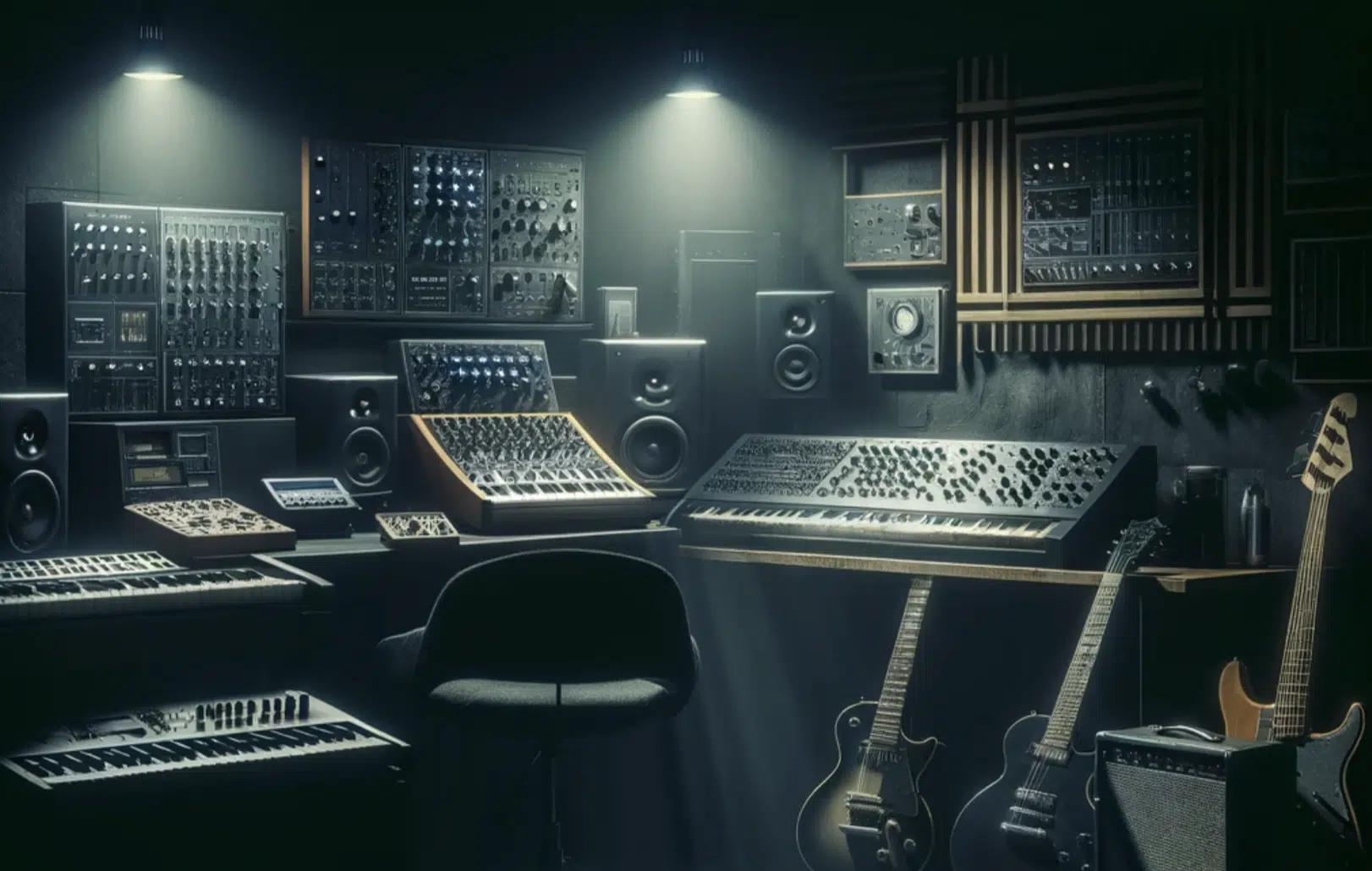
Dark chord progressions form the core of some of the most haunting and emotionally resonant pieces in music.
These progressions are distinguished by their ability to create an atmosphere that is both mysterious and deeply moving.
Dark chord progressions captivate listeners and draw them in with intrigue and a combination of:
- Minor chords
- Diminished harmonies
- Occasionally twists (major chords)
The uniqueness of dark chord progressions lies in their power to evoke a wide range of emotions, from melancholy and sorrow to suspense and eeriness.
They are a popular tool in various genres, especially where the tone and mood of the song are paramount.
The strategic use of these progressions can transform a simple melody into something profoundly evocative and alluring.
What sets dark chord progressions apart is their ability to blend different musical elements seamlessly.
They often combine the traditional structure of chord progressions with innovative twists, creating a sound that is uniquely haunting.
This blend of familiarity and surprise is what makes dark chord progressions a key element in crafting music that leaves a lasting impact on its listeners.
The Anatomy of Dark Chords: Breaking it Down
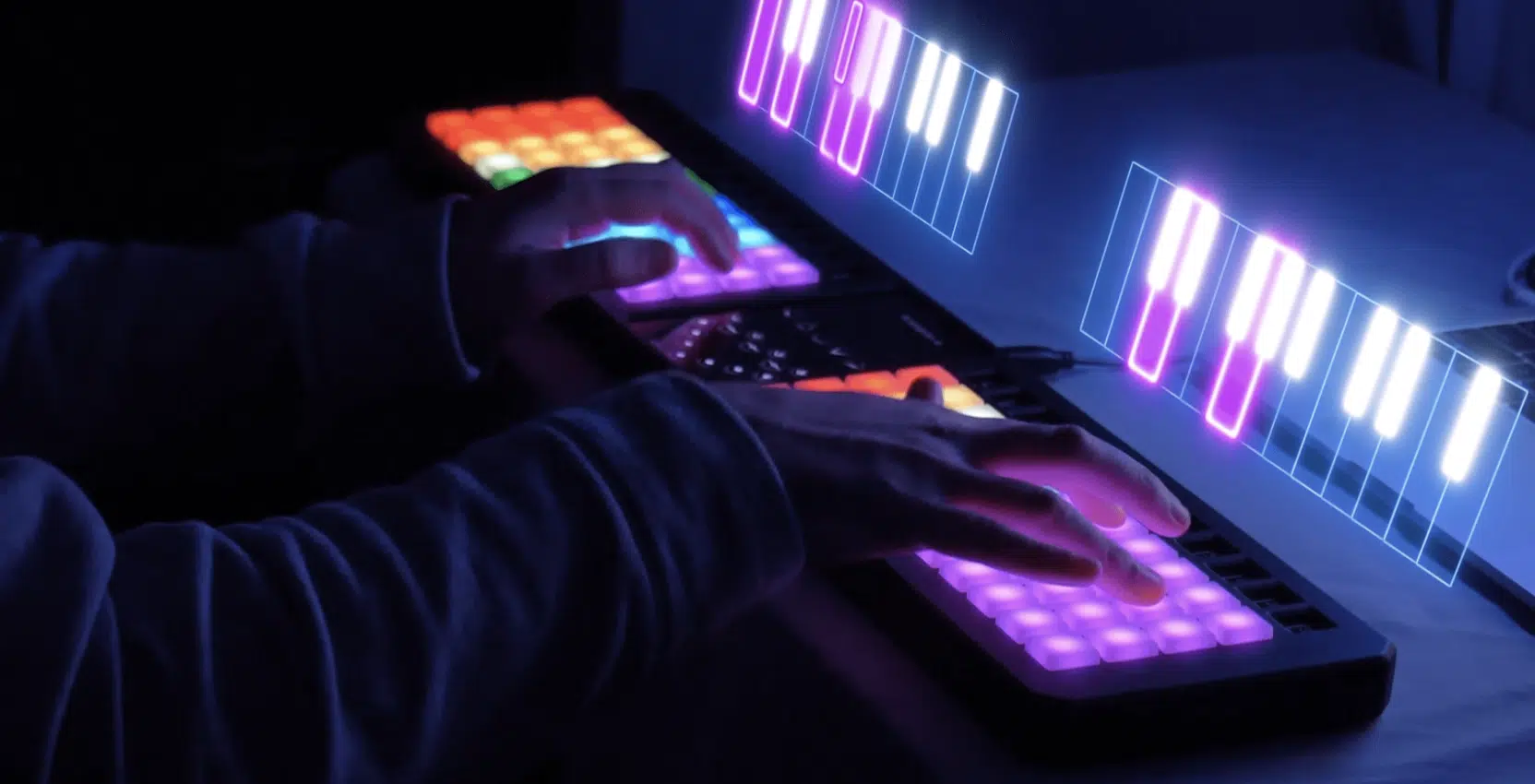
Dark chords, the fundamental building blocks of dark chord progressions, are complex and multifaceted.
As we touched upon, they often employ minor chords, diminished chords, and occasionally major chords (like the G major chord) used in unconventional ways.
The anatomy of these chords is not just about the notes that are played but also about how they interact with each other.
Understanding the structure of these chords is key to creating any dark music genre.
- A Minor Chord 一 Creates a sense of sadness or introspection, essential for crafting dark music.
- Diminished chords 一 Add a layer of musical tension and unease, perfect for evoking a chilling effect.
- A Major Chord 一 Highlights the dark feel of the surrounding minor chords.
The choice of chords and how they are played (whether through a piano, guitar, or digital instruments) also significantly affects the overall tone.
The same chord can sound vastly different depending on the specific instrument and unique playing technique.
This adds to the versatility and depth of dark chord progressions.
The combination of these different elements is what makes dark chords so effective in creating a haunting, captivating soundscape.
Minor Chords: The Key to Creating Dark Music

Minor chords are synonymous with dark music, often serving as the foundation for dark chord progressions.
Their sound is inherently melancholic and introspective, making them ideal for setting a somber or mysterious tone.
When a progression leans heavily on minor chords, it immediately adopts a darker, more haunting character.
In dark chord progressions, the placement of minor chords is crucial.
They can be used to:
- Start a progression (providing a moody opening)
- Placed strategically (to add depth and complexity)
The transition from a minor chord to another chord, whether it’s another minor, a diminished, or even a major chord, like the G major chord, is what shapes the mood.
Minor chords are not just limited to conventional forms.
Alterations like adding a seventh or ninth can further deepen the dark sound, adding various layers of complexity and emotion.
These variations allow for a richer, more textured sound 一 enabling you to craft haunting dark chord progressions.
The versatility of minor chords in creating dark music cannot be overstated.
From slow, brooding pieces to more up-tempo tracks with a sinister edge, these chords are capable of conveying a wide range of dark emotions.
That’s what makes them indispensable when diving into the world of dark music.
Major Chords: Getting Creative
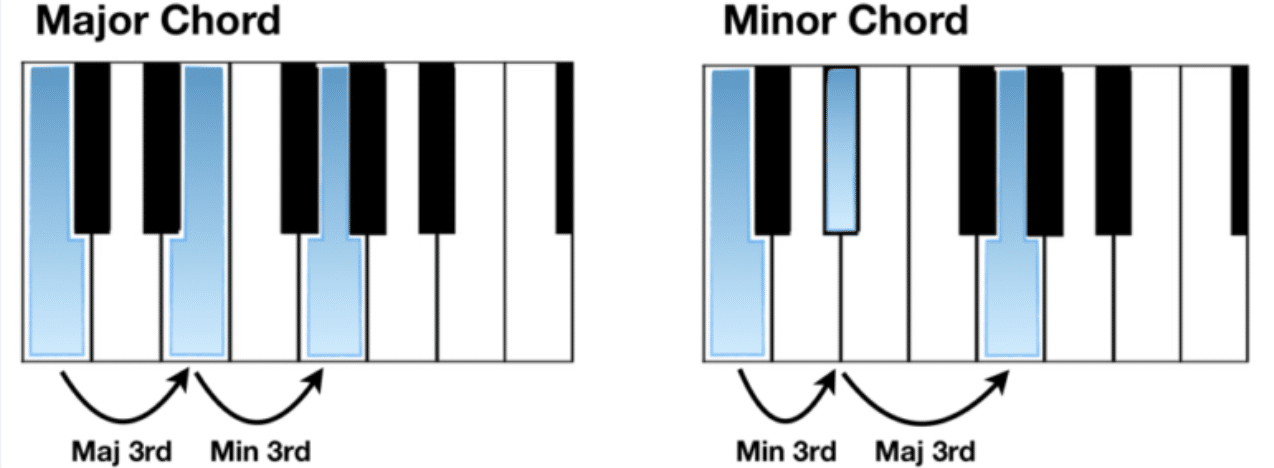
While minor chords are central to dark chord progressions, major chords also play a significant role.
When used creatively, they can add an unexpected twist, intensifying the dark feel.
A major chord, like a major seventh, when placed amidst a progression of primarily minor chords, can create a moment of contrast 一 heightening the overall dark effect.
The creative use of major chords in dark music often involves altering their typical context.
This might mean playing a major chord in a lower octave to give it a heavier, more ominous sound.
Or, using it in a deceptive cadence, where the listener expects a resolution to a minor chord but is presented with a major one.
These techniques can add a layer of sophistication and unpredictability to dark chord progressions.
Another approach is to use major chords sparingly, as a way to provide relief or a sense of false security before plunging back into the more typical minor or diminished chords.
The interplay between light and dark elements within the progression adds to the emotional complexity of the music.
This makes it more engaging, captivating, and impactful.
Building Haunting Melodies For Chilling Tracks
In the world of dark music, constructing melodies that resonate with the soul is crucial. It’s about blending chord progressions with a keen sense of musical storytelling.
-
Creating Minor Chord Progressions
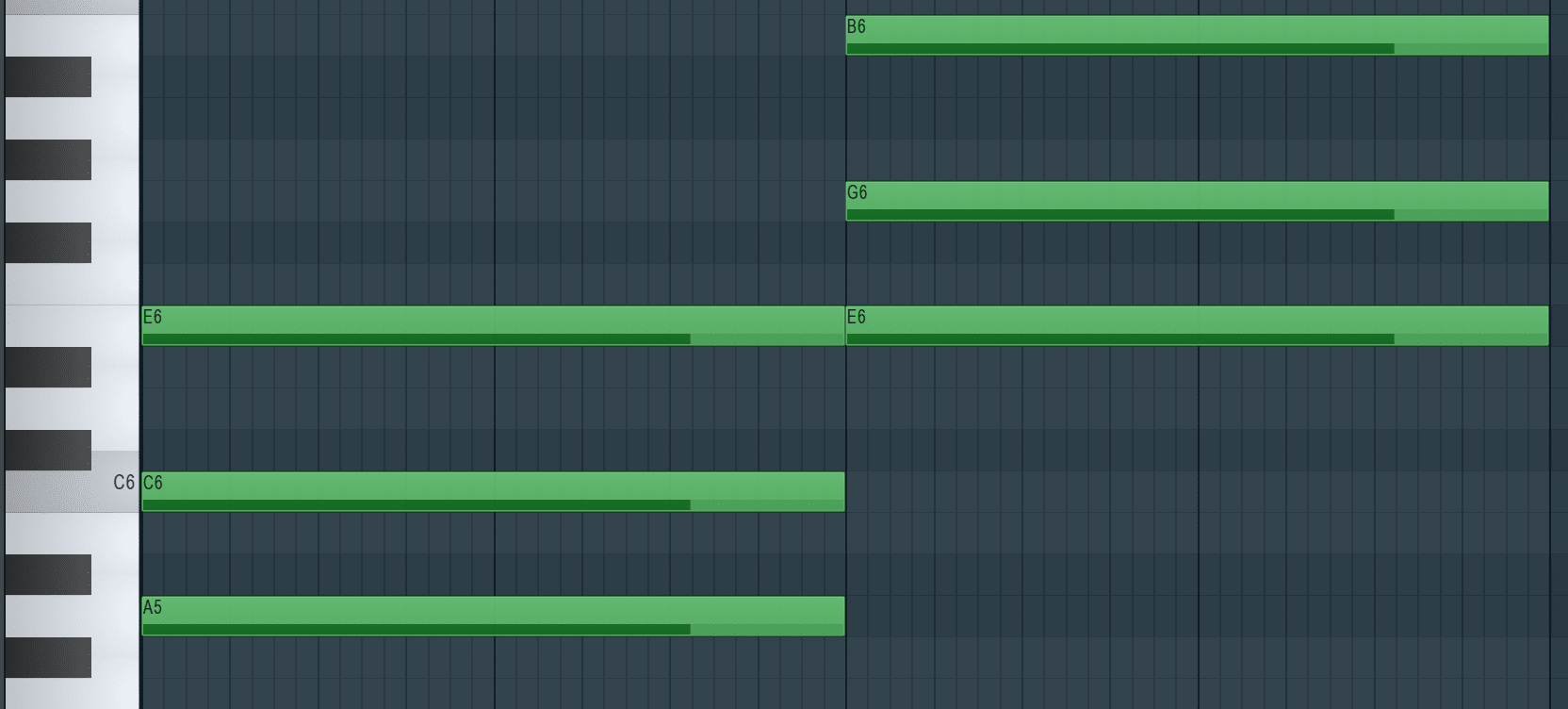
Crafting minor chord progressions is a delicate, meticulous art.
These chord progressions rely heavily on the use of minor chords to establish a haunting ambience.
The sequence in which these chords are arranged can dramatically alter the mood of a track, from somber and reflective to tense and unsettling.
A common technique in creating effective minor chord progressions is to focus on movement and flow.
This might involve progressing from a minor chord to a diminished chord, then resolving back to a different minor chord.
Such progressions keep the listener engaged 一 creating a sense of anticipation and emotional depth.
Another aspect of crafting minor chord progressions is the use of pacing and spacing.
The timing of chord changes (whether quick for a sense of urgency or slow for a more brooding feel) plays a crucial role.
This control over pacing allows producers to create a narrative within their music, guiding the listener through a spectrum of dark emotions.
-
Dark Chord Progression Techniques
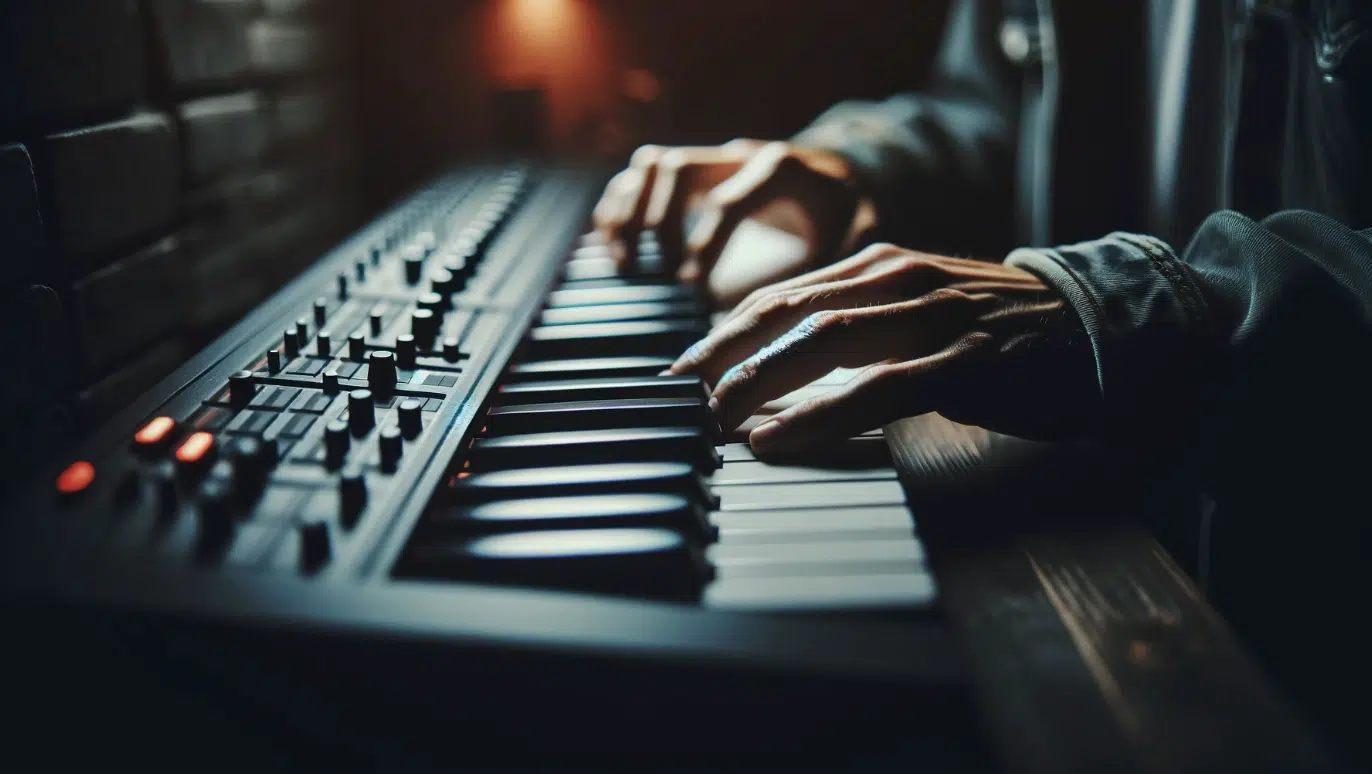
Dark chord progression techniques extend beyond the choice of chords; they encompass how those chords are played.
Techniques like arpeggiation, where chords are broken up and played as individual notes in succession, can add a sense of eeriness and complexity to a progression.
The use of suspended or added notes in a chord can also contribute to a darker feel.
For instance, adding a second or fourth to a minor chord can create a sense of unresolved tension.
This will enable the listener to seek resolution within the progression.
Modulation, or changing the key (minor/major key) in the middle of a progression, is another powerful technique.
It can take a listener by surprise, adding an element of unpredictability and tension to your dark song.
This shift can heighten the emotional impact of the music, further immersing the listener in the dark atmosphere of the track.
-
Using Diminished Chords for Darker Tones
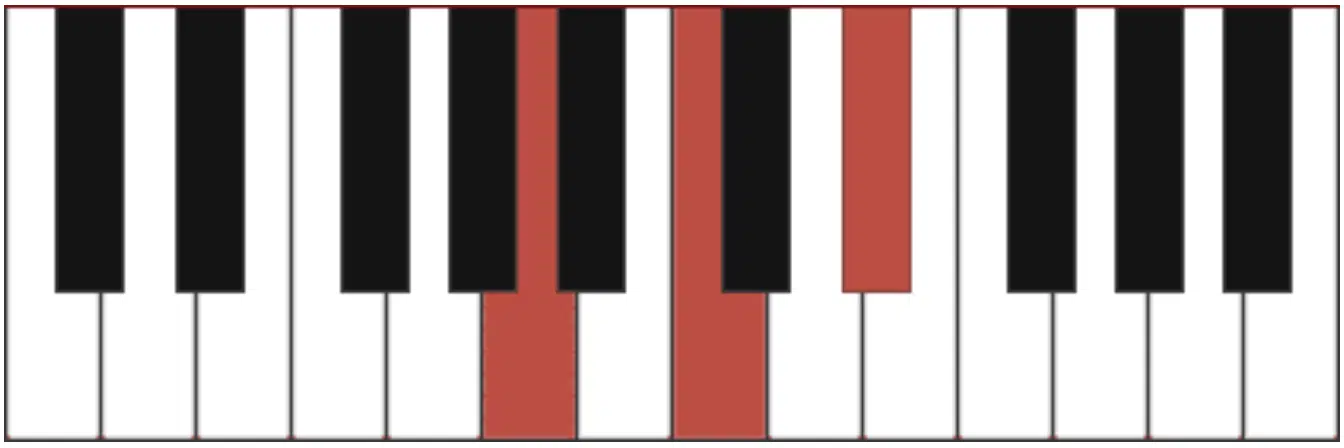
Diminished chords are a staple in creating darker tones within music.
Their dissonant sound naturally evokes feelings of tension and unease, making them perfect for dark chord progressions.
These chords can be used to add a sense of drama or to signal a shift in the emotional landscape of a piece.
When incorporating diminished chords, it’s important to consider their placement within the chord progression.
They often work best as transitional chords, leading the listener from one emotional state to another.
NOTE: This can be especially effective in building up to a climactic moment in the song.
Experimenting with different voicings of diminished chords can also yield interesting results.
For example, playing a diminished chord in a higher register can create a sense of foreboding 一 while a lower register might evoke a more somber mood.
The versatility of these chords makes them a powerful production tool.
-
Experimenting With Chord Voicings

Chord voicings play a significant role in defining the character of a dark chord progression.
Altering the order of notes in a chord, or extending it with additional notes, can change the progression’s entire mood and impact.
Experimenting with different voicings allows music producers to find the perfect sound for their track.
Open voicings, where the notes of the chord are spread out over a wider range, can make the chord sound bigger.
Closed voicings, on the other hand, create a tighter, more focused sound that can intensify the dark feel of a progression.
Chord Voicings also play a crucial role in how a chord progression interacts with other elements of a track, like melody and bass.
A well-chosen voicing can complement these elements, enhancing the harmony and adding to the track’s emotional depth.
This balance is what makes chord voicings an essential aspect of crafting dark music.
-
Managing Tempo For Mood
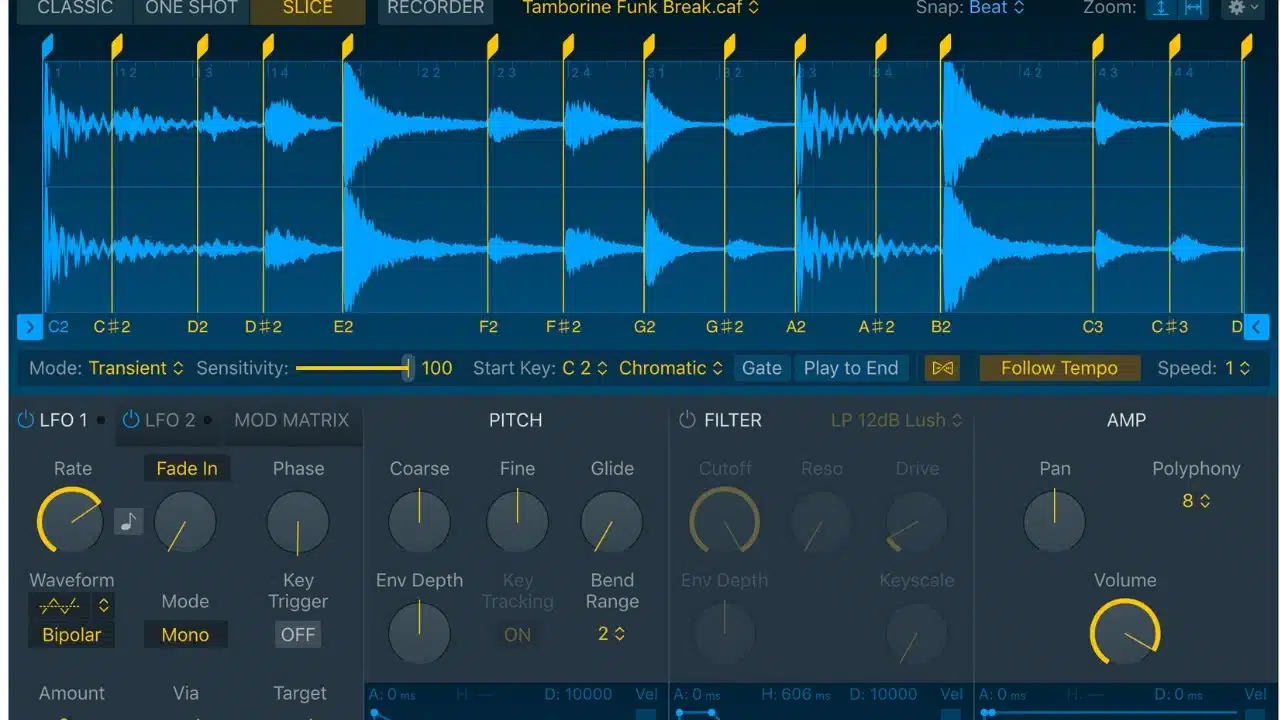
The tempo of a song plays a crucial role in shaping the mood, especially in music with dark chord progressions.
A slower tempo can enhance the feeling of melancholy or foreboding 一 allowing each chord to resonate and linger.
This gives the listener time to fully experience the emotional depth of the music.
A faster tempo can bring a sense of urgency or tension to dark music.
Even with the same chord progressions, a quicker pace can completely transform the mood, making the music feel more aggressive or unsettled.
This versatility of tempo will help you create the intended emotional impact.
Balancing the tempo with the rhythmic structure and chord changes is absolutely essential.
The right combination can evoke a powerful, immersive experience, drawing listeners into the world created by the music.
Whether slow and haunting or fast and intense, the tempo is a key component in the art of making dark music.
-
Creating Tension With Dark Chord Progressions
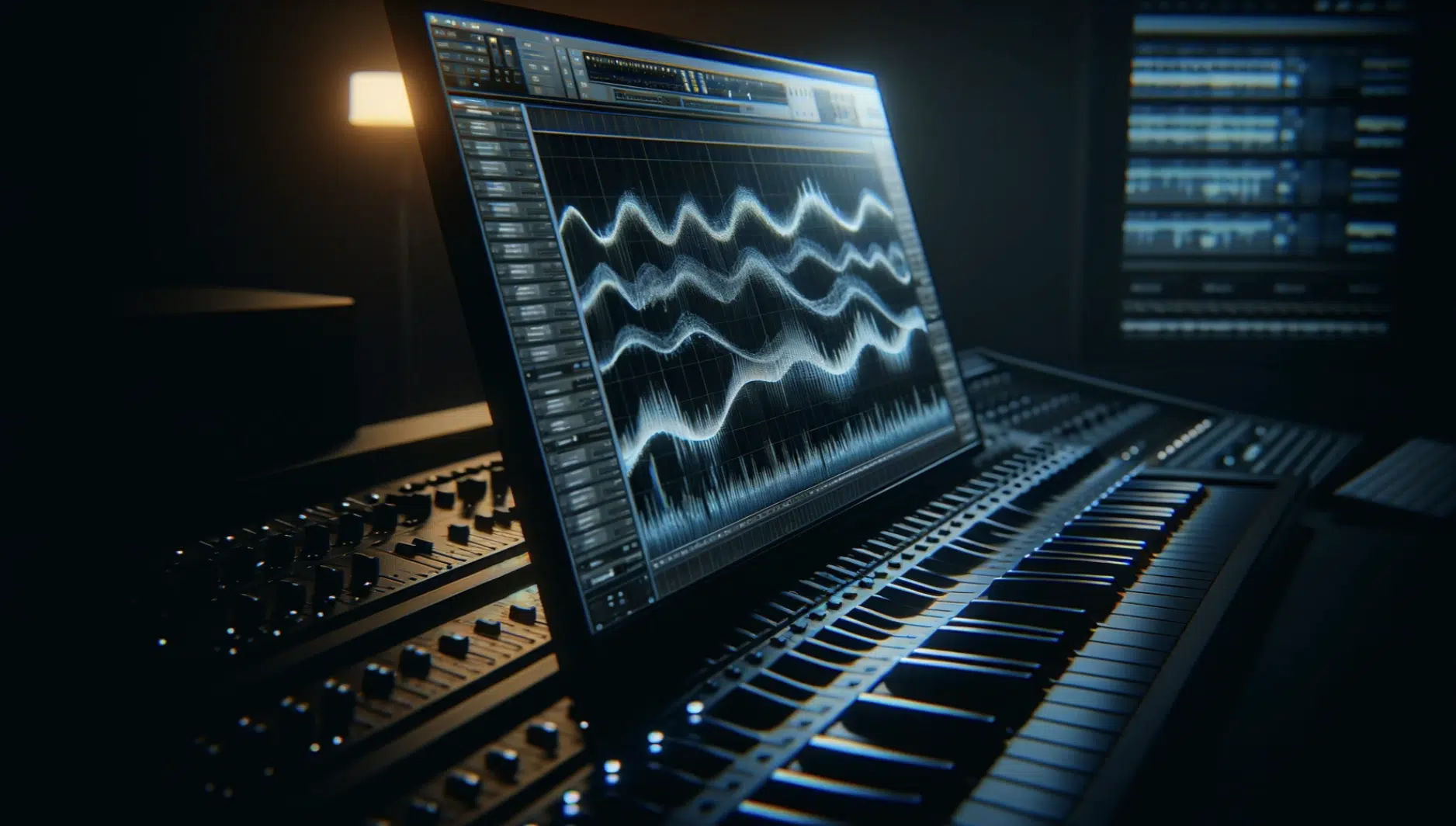
Creating tension within dark chord progressions is a technique used to keep listeners engaged and emotionally invested.
Tension can be built through the use of dissonant chords, unexpected chord changes, or by delaying the resolution of a dark chord progression.
This creates a sense of anticipation and unease which compels the listener to pay close attention and get emotionally invested.
The use of silence or pauses within a dark chord progression can also be effective in creating tension.
These moments of stillness can make the subsequent chords feel more impactful, heightening the emotional resonance of the music.
It’s a subtle yet powerful way to add drama and intensity to a track.
Another method is to gradually build up the complexity and intensity of the progression over the course of a track.
NOTE: Start with simpler, more subdued chords.
Then, slowly introduce more dissonant or complex ones can create a growing sense of tension 一 harnessing a powerful emotional release.
This technique is especially effective in longer compositions or tracks that tell a story.
The 5 Most Popular Dark Chord Progressions
In exploring the world of dark music, certain chord progressions have stood out for their ability to evoke deep, complex emotions and create haunting atmospheres.
Let’s delve into five of the most popular dark chord progressions and examine how they’ve been used in popular music so you can use them like a professional.
#1. The Minor Fall, Major Lift
The ‘Minor Fall, Major Lift’ progression, typically following the i-VI-III-VII pattern, is a cornerstone in dark music.
It’s often heard in genres ranging from pop to more melancholic electronic genres, and even jazz music.
This dark progression is formed with:
- A minor chord (i); the root note
- A major chord (VI); for contrast
- The III and VII chords; for emotional depth
A classic example of this progression is its use in alternative rock and indie songs, where it creates a deep sense of longing or existential angst.
The shift from the minor to the major chord in this progression adds a twist that can evoke an array of complex emotions.
This makes it a favorite amongst music producers and artists for dark songs.
When creating music with this dark chord progression, altering the rhythm or playing style can significantly change the mood.
For instance, arpeggiating the chords can give the progression a more haunting feel, while playing them in staccato can add a sense of urgency.
The versatility of the ‘Minor Fall, Major Lift’ makes it an invaluable tool for composers and producers aiming to evoke a wide range of emotions in their listeners.
Modern Example: “The Hills” by The Weeknd.
This song is a great example of a contemporary hit that uses this chord change effectively.
You can hear that it blends dark, moody tones with the rhythmic elements characteristic of modern hip-hop and R&B.
#2. The Lament Sequence
The Lament Sequence, or the i-VII-VI-V progression, is renowned for its melancholic and haunting qualities.
It starts on a minor chord, creating a somber base, then descends through a series of chords that create tension and a sense of despair.
This progression has been a staple in classical music for centuries and has found its way into modern genres, retaining its powerful emotional impact.
This dark chord progression is often used in cinematic music and dark ballads to underscore moments of sorrow or tension.
Its repetitive, descending pattern creates a spiral of sadness.
This makes it perfect for scenes or songs that require a deep emotional connection.
To experiment with this dark chord progression, consider varying the chord voicings or adding unexpected notes (such as sevenths or ninths).
This will deepen the sense of musical darkness.
Playing the progression with different instruments or synthesizers can also bring a new dimension to this timeless sequence 一 offering a modern take on a classic formula.
Modern Example: “Summertime Sadness” by Lana Del Rey (Cedric Gervais Remix).
While the original track leans more towards pop, the remix adds a trap influence that illustrates how this progression can be adapted for a hip-hop/trap context.
You can hear how the chords share a cohesive space, a key element of dark songs.
#3. The Dorian Descent
The Dorian Descent, using the i-IV-vii-III chord progression, is characterized by its use of the Dorian mode, giving it a distinctively dark yet somewhat hopeful tone.
This dark chord progression typically:
- Starts with a minor chord
- Is followed by a major chord a fourth above
- Moves on to the darker vii and III chords
This dark chord progression is particularly popular in genres like progressive rock and ambient music, where its blend of dark and light elements can be used creatively.
It’s perfect for tracks that explore themes of struggle and redemption, as the interplay of the minor and major chords captures a wide range of feelings.
Play around with the timing and emphasis of each chord to create different effects.
For instance, lingering on the IV chord can create a moment of respite in an otherwise dark progression.
On the other hand, quickly moving through the vii to the III can intensify the feeling of unrest and darkness.
Modern Example: “Goosebumps” by Travis Scott.
The darkness of this song showcases the Dorian Descent progression within a trap and hip-hop framework, demonstrating the progression’s versatility and emotional impact.
#4. The Phrygian Fall
The Phrygian Fall, following the i-III-II-VI chord progression, taps into the exotic and ominous sound of the Phrygian mode.
It begins with a dark minor chord and progresses through a series of intervals that are characteristic of the Phrygian scale, known for its mysterious and eastern qualities.
This dark chord progression is a favorite in dark electronic and ambient music, where its unique sound can create an otherworldly atmosphere.
The use of synthesizers and digital audio effects further enhances the eerie quality of the Phrygian Fall.
This makes it ideal for tracks that aim to transport the listener to a different realm.
When working with this dark chord progression, consider the impact of instrument choice and sound design.
For instance:
- Using a modulated synth for the III or II chord 一 Accentuates the exotic feel.
- A more traditional piano sound 一 Brings a sense of classiness.
The Phrygian Fall’s versatility makes it a powerful tool for producers looking to infuse their tracks with a sense of mystery and intrigue.
Modern Example: “Redbone” by Childish Gambino.
This song makes creative use of the Phrygian Fall, blending it with elements of funk and soul.
However, it can be a source of inspiration for hip-hop producers looking to incorporate exotic and mysterious sounds into their beats.
#5. The Gothic Turn
The Gothic Turn, characterized by the i-vi-IV-V progression, is often found in music with a darker, dramatic tone.
It starts with a haunting minor chord and moves through a series of chords that create a feeling of longing and intensity.
This dark chord progression has been used effectively in dark pop and rock genres, where its blend of melancholy and drama fits well with themes of:
- Love
- Loss
- Despair
- Struggle
- Angst
The transition from the minor i to the major IV and V chords adds a sense of lift and resolution.
This makes the Gothic Turn both moving and memorable.
Experimentation with this dark chord progression can involve altering the rhythm or adding layers of harmony to enhance its emotional impact.
For instance, using a string section to play the chords can give the progression a lush, cinematic feel, while an electric guitar can lend an edgier, more raw sound.
The Gothic Turn’s flexibility makes it a favorite among composers and producers in various dark music genres.
Modern Example: “Bad Guy” by Billie Eilish.
While not a hip-hop song per se, its minimalist production and dark, brooding atmosphere align with the sensibilities of modern hip-hop and trap music.
This makes it a relevant example for producers exploring dark chord progressions.
Harmony & Melody in Dark Chord Progressions
When producing dark music, the interplay between harmony and melody is crucial.
Let’s explore how these different elements come together to create a hauntingly beautiful dark sound.
-
Harmonizing for a Dark Feel
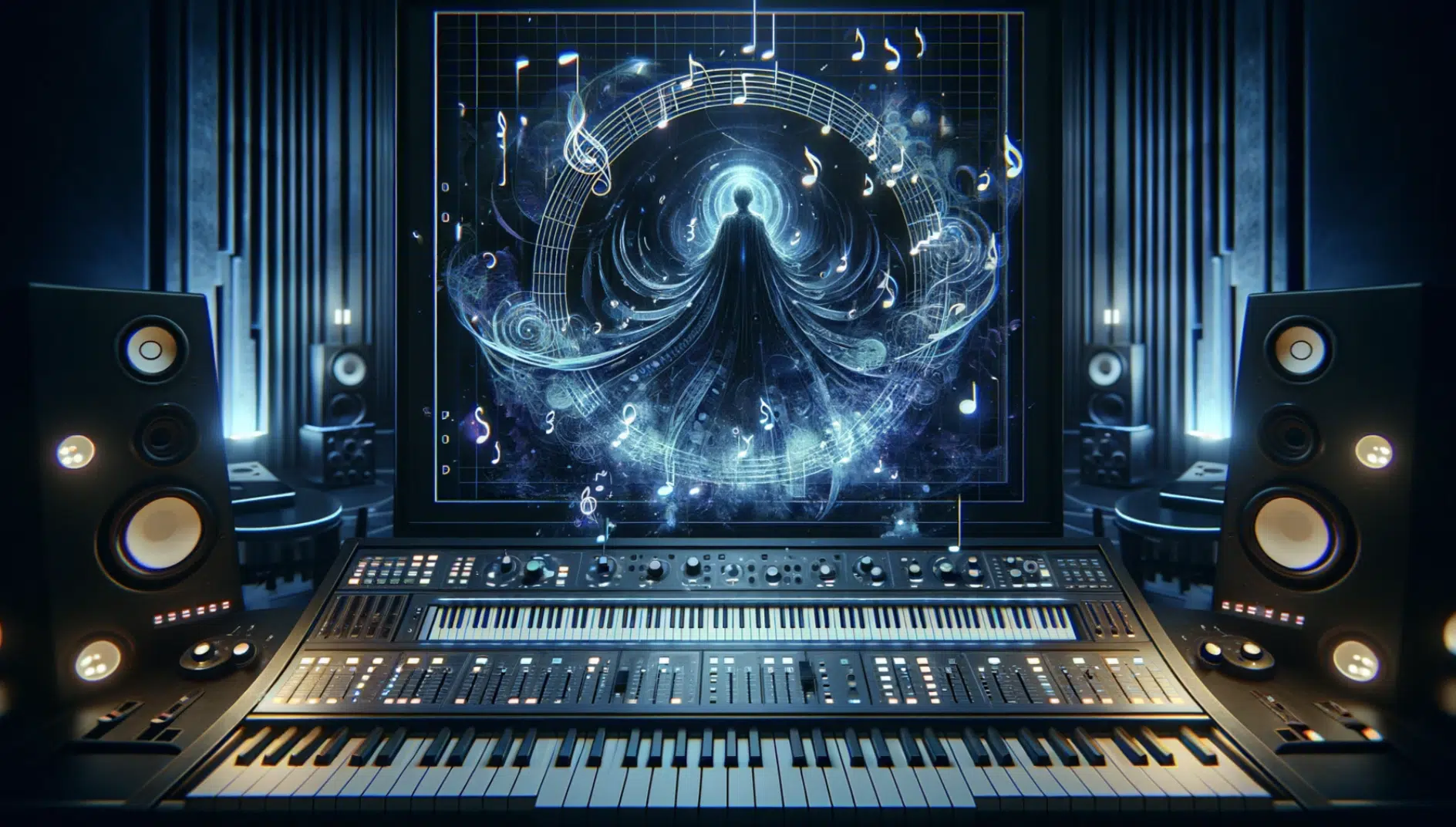
Harmonizing in dark music involves more than just choosing the right chords; it’s about how those chords support and interact with the melody.
A well-harmonized track can elevate the melody, enhancing its emotional impact.
Using minor and diminished chords as the harmonic foundation often results in a darker feel, complementing a melancholic or eerie melody.
The use of dissonant intervals within the harmony can also add to the dark feel of a track.
Intervals like minor seconds or tritones, when used carefully, can create tension and unease that is quintessential in dark music.
These dissonances, when resolved, can provide a powerful emotional release.
Another aspect of harmonization is the use of counterpoint, where two or more independent melodies are played simultaneously, each with its own harmonic implication.
This technique can add layers of complexity to the music 一 creating a richer, more textured sound.
When used effectively, counterpoint can make a dark song more engaging.
-
Melodic Elements of Dark Songs

The melody in dark songs often carries the emotional weight of the track.
It’s important to craft melodies that not only complement the chord progressions but also stand on their own as memorable and expressive elements.
Certain scales can help in creating melodies that have a dark, haunting quality, like:
- The Natural Minor
- The Harmonic Minor
- The Phrygian mode
The contour of the melody is also crucial…
Melodies that feature wide intervals, unexpected leaps, or descend in a stepwise manner can evoke a sense of sadness.
Playing with the rhythm and timing of the melody (using syncopation or rubato) can add an element of unpredictability and enhance the dark feel of the music.
Another technique is to create a call-and-response pattern between the melody and the chord progression.
This interaction can build a narrative within the music, with the melody and chords responding to and reflecting each other’s emotional content.
Such a dialogue can make a dark song more dynamic and engaging, drawing the listener into the story the music tells.
The Role of Key and Scale in Dark Music
Your key and scale choices (like minor/major key and scales) are pivotal in defining the mood and character of dark music.
Let’s break down how these elements influence the creation of haunting melodies and dark chord progressions.
-
Minor Key: A Gateway to Musical Darkness
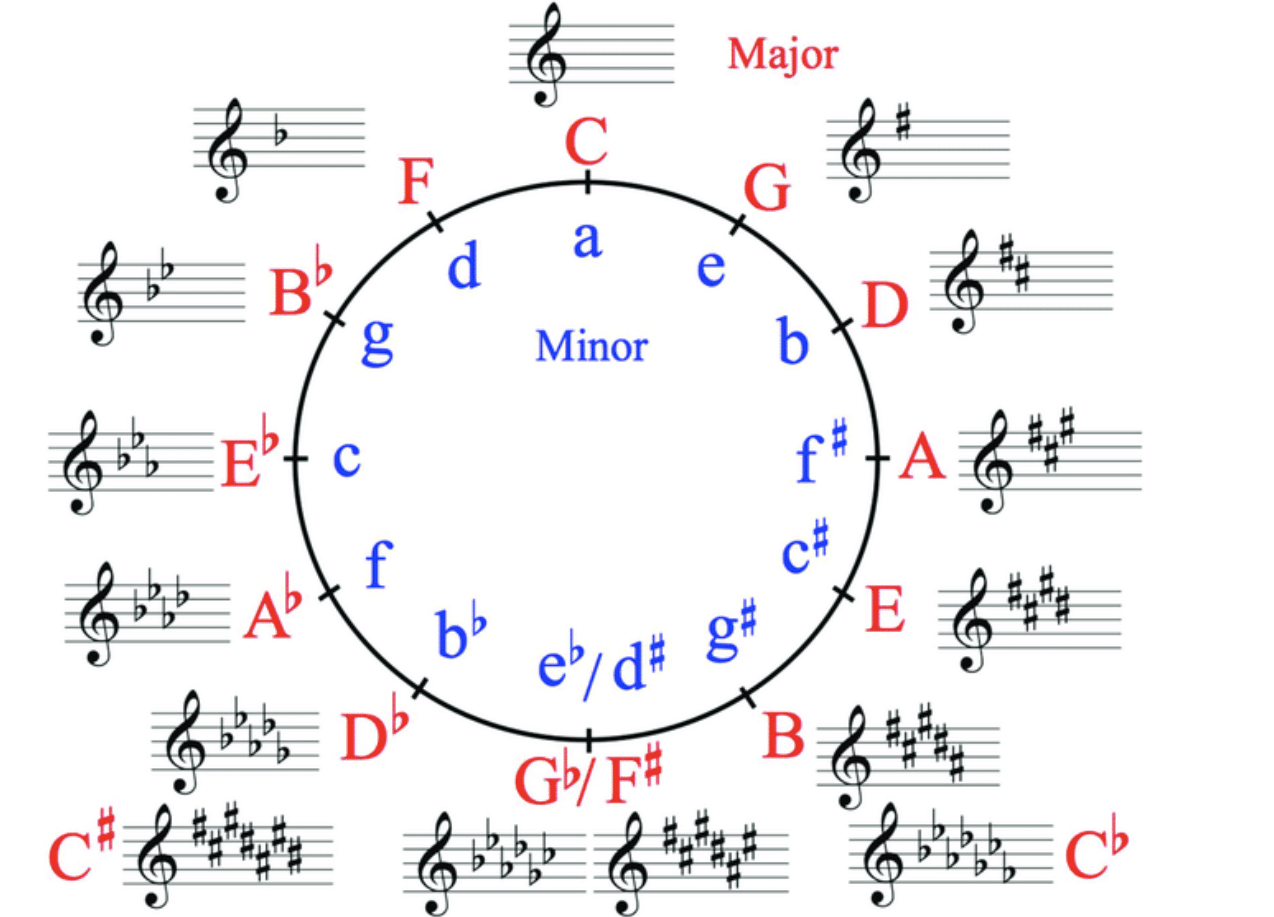
The minor key is often the first choice when creating captivating dark music.
Its inherent tonal qualities provide an ideal foundation for composing dark chord progressions.
This tonal qualities emulate:
- Melancholy
- Introspection
- Sorrow
The minor key’s natural tendency to evoke somber and reflective emotions is perfect for creating a dark atmosphere.
Within the minor key, there are variations, such as the natural minor, harmonic minor, and melodic minor scales, each bringing a unique flavor to the music.
The harmonic minor, with its raised seventh, offers a sense of musical tension and drama,
The melodic minor, with its fluctuating sixth and seventh degrees, adds complexity and emotional depth to dark chord progressions.
Utilizing modal interchange, or borrowing two chords from parallel scales, is another technique that can enhance the dark sound of a track in a minor key.
This approach allows for the introduction of unexpected chords and harmonies.
Which, in turn, adds layers of intrigue and sophistication to the music.
-
Scale Choices for Mysterious Melodies
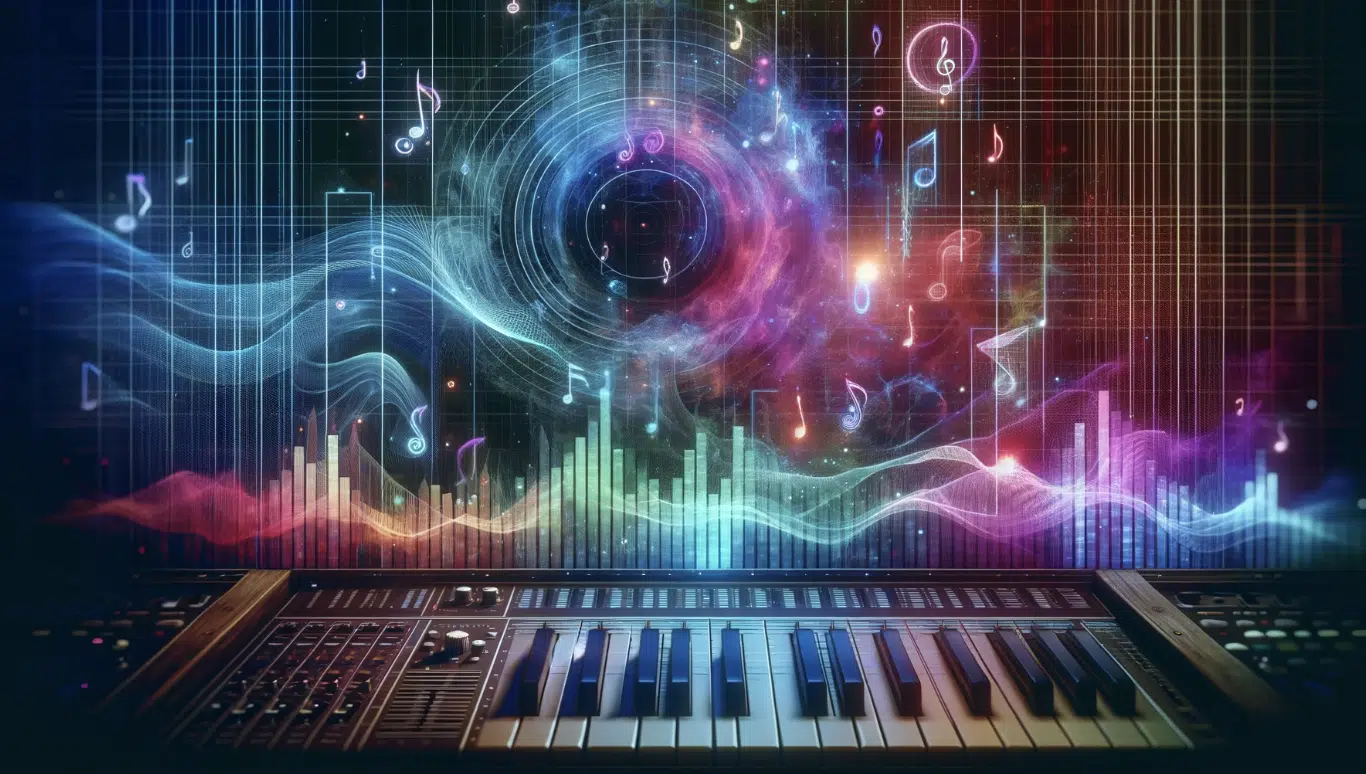
Beyond the traditional minor scale, other scale choices can contribute significantly to the mysterious and haunting quality of dark music.
The Dorian and Phrygian modes, for instance, offer a twist on the typical minor sound.
They infuse the music with a unique character that can range from subtly haunting to distinctly eerie.
The Dorian mode, with its raised sixth degree, provides a slightly brighter yet still somber feel, ideal for unique music that sits in the grey area between dark and hopeful.
The Phrygian mode, with its lowered second degree, brings an exotic and mysterious quality, perfect for creating a sense of foreboding or otherworldliness.
Experimenting with unconventional scales, like the double harmonic or Hungarian minor scale, can also yield intriguing results.
These scales, with their unusual intervals and tonalities, are great for crafting melodies and progressions that stand out for their dark and captivating sound.
They allow you to push the boundaries of traditional dark music and music theory.
Dark Chord Progressions: Final Thoughts
The mastery of dark chord progressions is a vital skill for any music producer looking to delve into the realm of dark, emotionally charged music.
And, after this article, you now have insights and techniques essential for creating tracks that are hauntingly compelling.
Understanding the art of harmonizing, crafting melodies, and the strategic use of scales is crucial in achieving the desired dark aesthetic in your music.
But there’s more to elevating your dark hip-hop beats than just theory and techniques…
To truly bring your creations to life, having the right tools and resources at your disposal is key.
This is where the Free Dark Hip Hop Sample Pack comes into play.
Packed with over 60 free hip-hop samples, loops, and MIDIs, this sample pack is your gateway to crafting beats that don’t just sound professional but are placement-ready.
These dark hip-hop samples are modeled off the styles of some of the biggest names in the industry like Drake, 21 Savage, and Young Thug.
Each sample is carefully curated to add that essential dark flavor to your beats 一 ensuring they stand out in today’s competitive music landscape.
Whether you’re layering a haunting melody or constructing a deep, impactful bassline, this sample pack is invaluable.
As you continue your music production journey, remember the art of creating dark chord progressions is an ever-evolving skill.
So, keep experimenting, keep learning, and most importantly, keep creating.
By using the tips and techniques we’ve discussed today, you’re well on your way to making music that not only resonates with the trends but also with the hearts of your audience.
Until next time…







Leave a Reply
You must belogged in to post a comment.